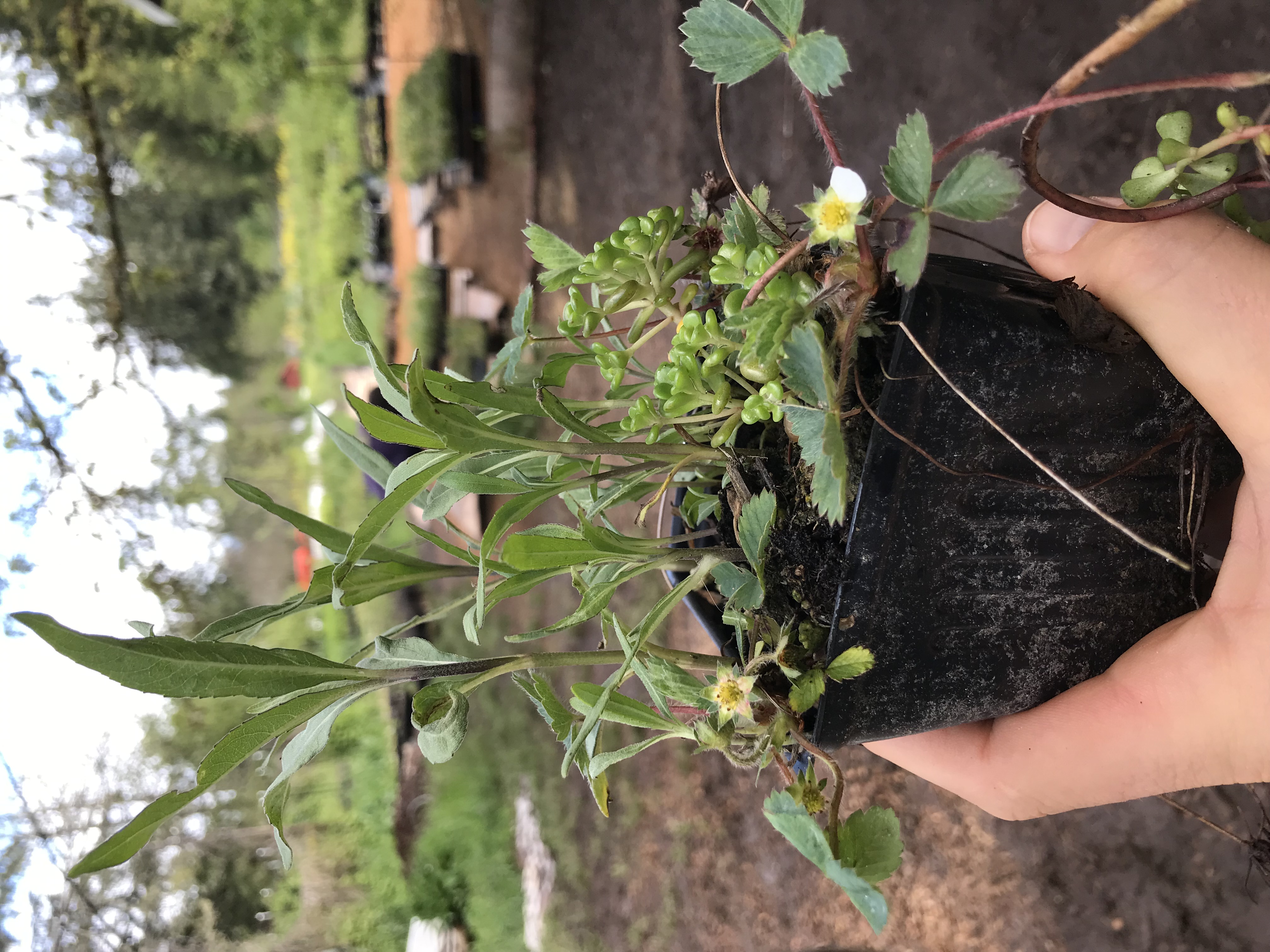In sustainable agriculture, "polyculture" refers to the practice of growing multiple species in the same area. While this concept is just being reintroduced into modern agriculture, it is a staple practice for the backyard sustainable gardener (also known as "companion planting"). And for us that love native plants, we know the ecosystems around us are the master teachers of this art.
The ecosystems of the NW, for example, offer endless examples of polyculture. As we traverse the foggy coastal forests, the wetland valleys, the various aspects of the mountain slopes (to name a few) - we see our favorite plants lovingly tangled together in varying patterns. And all this ancient ecological knowledge; it can find its way right back to our gardens...
Sometimes all we have to do is get out of the way. Here's Nature practicing polyculture in our very own nursery:

A sleepy Maximilian Sunflower emerged this Spring, only to find an Oregon Stonecrop and two Coastal Strawberries growing in its pot!
Scenes like this are far from rare in our small and diverse nursery environment. Even the slivers of dirt that edge our pallets are sometimes full of self-sown natives from our own plant stock. As the saying goes, "Nature abhors a vacuum". Left to its own devices, life finds a way to fill the cracks in any ecosystem.
Instead of being a detraction, this phenomenon is celebrated here at the nursery. In fact, we just sent that pot out to an unsuspecting customer with a note explaining the circumstances...(We thought they might like a 3-for-1.) While polyculture products are not yet on our website, we are certainly considering it!
Polycultures are not just more beautiful and natural, however, they are also more efficient and productive in the long-term - just ask Nature. (I could list a thousand negative impacts of monocultures in today's agricultural systems. They may have seemed efficient for a few decades, but the test of time is showing they are just soil-destroying, pesticide-needy, fertilizer-hogs.) We can prove this age-old truth in our own backyards, and be a boon to biodiversity at the same time.
Did you know that during the victory gardens after WWII, in many areas people were growing 80% of their own fresh produce? 80%! And doing it much more sustainably, I might add. For native plant gardeners, it's not too far of a stretch to imagine that if we get to work, within a few decades small private landowners might account for 80% of the ecological diversity in our regions. And get some native food calories from our patches, as well.
In fact, 80% percent of the world's biodiversity that's left is actually managed by indigenous people, on indigenous land. That's right, people in touch with their land can actually be the source of ecological integrity, not the destruction of it. So join us in this movement to restore, re-learn, and re-integrate with Nature once again - one polyculture at a time!
Sincerely,
Justin Michelson & Native Foods Nursery
